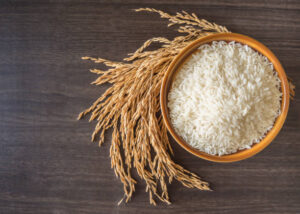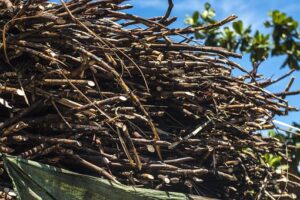Rainy season crop: Wondering which crops grow during rainy seasons? You’ve come to the right place. Listed below are the 5 most important crops to sow in rainy season, as well as information on the crops sown in rainy season.
Approximately 60-70% of India’s population is employed in agriculture, which is the country’s largest industry. Among the activities included in this industry are crop cultivation, livestock raising, agroforestry, and many others.
Crops during the rainy season are most vulnerable during this period
Monsoon season remains the most crucial season for the agricultural industry, precisely because it yields the largest amount of staple food crops such as Rice, Cotton, Sugarcane, Tea, Pulses, as well as rainy season crops such as sorghum (chara), maize, rubber, coffee, Guar, sesame, and cereals like arhar Dal, pearl millet, soybeans, cotton, oilseeds, etc.
Agricultural industries depend heavily on the monsoon season. When the monsoon is weak in India, there might be a reduction in the output of rainy season crops, which may lead to the government increasing the minimum support price for farmers to support the larger farming community, raising market prices.
The Indian economy and growth can be negatively affected by a poor monsoon season.
Crops grown in rainy seasons
Kharif crops, also known as rainy season crops or monsoon crops, are grown during the rainy season. Indian households typically grow and harvest these crops during the rainy season between June and November.
Rainy season crops must be sown and harvested in humid, warm conditions.
Although Kharif crops are grown during the rainy season, an interesting fact is that the Arabic-derived name Kharif was first used in India during the Mughal Empire. Since then, it has become widely used. The Arabic word kharif refers to autumn; therefore, the two seasons are in sync.
Rabi crops thrive during the dry season, as opposed to Kharif crops which are grown during the rainy season.
Cultivation And Harvesting Months of The Rainy Season Crop
Kharif season can start in May and end in January, depending on the crop and area. India’s season is expected to begin in June and last until October. As the southwest monsoon season approaches, these rainy season crops are often planted at the beginning of the first rains and harvested in October and November.
It is possible to sow during the monsoon season in Kerala in the south as early as the end of May and in Maharashtra and other states in northern India as late as July.
Crops sown during rainy seasons have the following features
-
The rainy season is the best time to grow these crops.
-
Summer crops (Monsoon crops) are sown after the first rains of the year.
-
During the months of September and October, the crop is harvested.
-
To grow successfully, it needs a lot of water and a hot climate.
-
The following are examples: Rice, Cotton, Bajra, Pulses (like Urad Dal), Maize, Groundnut, Jowar, Jute, Sugarcane, Turmeric, etc.
Preparing For Rainy Season Crop Production: Points To Consider
Farmers may face difficulties when growing monsoon crops during the monsoon season
-
During the rainy season, crops grown in the rainy season need sufficient water to thrive, since intense rainfall patterns can stifle growth.
-
Agricultural damage can be caused by hailstorms. Severe hailstorms during the rainy season can damage crops, resulting in permanent damage.
-
The monsoon crop growth pattern can be adversely affected by inappropriate weather conditions. There might be a difference in the size or quality of the grains as a result.
The top five crops in India during the rainy season
Let’s look at the most important rainy season crops list and eliminate the question of “which crops are grown in rainy season?” now that we know everything about the crops grown in rainy season.
1. RICE

There is no doubt that rice is one of the most popular crops sown in the rainy season and the most important crop during Kharif. The crop is a primary food source for the nation. A healthy Kharif harvest is therefore crucial to the country’s food security. There is a sizable market for rice in India, which is the world’s largest rice exporter. Temperatures between 21 °C and 37 °C are best for its seeds in hot, humid climates. In terms of rice production, West Bengal, Punjab, Orissa, and Uttar Pradesh are the top four states. Rainfall and atmospheric moisture are required for irrigation.
The world’s largest rice producer is China, with an annual average production of 148,032 thousand tonnes (milled basis), followed by India with 116,016 thousand tonnes (milled basis).
At the earliest stage, paddy fields, which are typical rice fields, must be flooded with 10-12 cm of water.
| Opted Technique | Transplantation technique, Japanese Transplantation technique, new SRI technique |
| Varieties | Aman, Sali, Afghani, Aus, Boro, Palau |
| Required Temperature | ∼ 24° C |
| Water Level | 150 cm |
| Type of Soil | Clay/ Loamy |
| Important Producing States | West Bengal, Uttar Pradesh, Andhra Pradesh, Punjab, Bihar, Orissa, Chhattisgarh,Assam, Tamil Nadu, Haryana |
| Highest Producing State in the country | West Bengal |
| Highest per Hectare Yield | Punjab |
| Research Centre | Odisha, Cuttack |
| Highest Producing Country | China |
2. COTTON

There is no doubt that cotton is one of the most significant fibre crops in India and around the globe. Cotton fibre is the most essential raw material for the textile industry. Crops like cotton require high temperatures between 21°C and 30°C; if the temperature falls below 21°C, the crop’s growth is significantly slowed. Cotton should therefore be grown in regions with at least 210 frost-free days a year since frost is its number one enemy.
The meager water requirement can be met by a yearly rainfall of 50 to 100 cm. It is possible to cultivate in places with less rainfall, however, with the help of new irrigation techniques.
The central cotton-growing states are Punjab, Haryana, Gujarat, and Rajasthan, where over 80% of all irrigated land is dedicated to cotton cultivation.
| Varieties | Long Staple, Medium Staple, Short Staple |
| Required Temperature | 21-30° C |
| Water Level | 50-100cm |
| Type of Soil | Black soil (Highly water-retentive soil) |
| Important Producing States | Karnataka, Gujarat, Andhra Pradesh, Tamil Nadu, Haryana, Madhya Pradesh, Punjab, Rajasthan, Orissa, Maharashtra |
| Highest Producing State | Gujarat (According to the 2015 report) |
| Research Centre | Nagpur, Maharashtra |
| Highest Producing Country | China |
3. SUGARCANE

One of the most valuable rainy season crops is sugarcane. India produces 281,170 thousand tonnes of sugar (milled basis) a year, ranking second in the world. It is second only to Brazil in terms of production, with 455,291 thousand tonnes per year (milled). Sugarcane growth requires a long monsoon season of at least 7-8 months. Sugarcane is now produced in South India more than in North India, as was the case in the past. North Indian sugarcane is much less sugary than subtropical sugarcane. During the winter months, sugar industries in North India remain closed. Sugar content and production in South India are high due to tropical varieties and coastal regions.
| Required Temperature | 20-26 °C |
| Water Level | 75-150 cm |
| Type of Soil | Black Cotton Soil/ Clayey Loamy Soil/ Brown Loamy Soil / Red Loamy Soil |
| Important Producing States | Uttar Pradesh, Punjab, Maharashtra, Andhra Pradesh, Karnataka, Tamil Nadu, Gujarat, Haryana, Bihar, Uttarakhand |
| Highest Producing State | Uttar Pradesh |
| Highest per Hectare Yield | Tamil Nadu |
| Research Centre | Lucknow |
| Highest Producing Country | Brazil |
4. Tea

Tropical and subtropical areas are primarily home to evergreen tea plants. Rainy season crops such as tea require a great deal of labour, and half of the workers are women. Soft shade, however, promotes faster growth of tea crops. It was during the British era that commercial tea planting first began in India. After China, which produces 2,400,000 metric tonnes of tea a year, India is the world’s second-largest tea producer (900,000 metric tonnes) and consumer. Rain is necessary for tea plants, but their roots cannot withstand water logging. This necessitates messy regions.
| Required Temperature | 20-30 °C |
| Water Level | 150-300 cm |
| Type of Soil | Loamy soil (acidic and rich in organic matter) |
| Important Producing States | Assam, Himachal Pradesh, Darjeeling (West Bengal), Tamil Nadu, Meghalaya, Karnataka, Kerala |
| Highest Producing State | Assam |
| Research Centre | Assam, Tocklai |
| Highest Producing Country | China |
5. Pulses

Indian agriculture also produces pulses during the rainy season. During the monsoon season, black gram and green gram are India’s most significant and vital crops. A specific care has been taken during each season of the year for these crops.
Providing high-quality protein and cereal proteins, pulses are an important commodity group of crops for the nation’s sizable vegetarian population. Traditionally, pulses have been cultivated and harvested in regions that are rainfed and do not need extensive irrigation facilities. Following the harvest of cereals and cash crops, they are abandoned. Pulses are still more effective under these circumstances. Besides being high in protein, pulses also have several other benefits, such as enhancing physical performance. As well as their suitability for mixed/intercropping, crop rotation, and dry farming systems. Produce vegetables and cattle fodder with this method.
In terms of output and consumption, India contributes 26% and 30%, respectively, to the global pulse market.
Indian exports are largely composed of pulses, which are a significant group of crops. A number of economic advantages can be attributed to them as well. For a total of Rs. 2,117 crores, the nation exported pulses worth 2,96,169 MT between 2020 and 2021.
These regions include Punjab, Haryana, Western Uttar Pradesh, the West Bengal delta, coastal Andhra Pradesh, Tamil Nadu, Kerala, and coastal and eastern Karnataka. Maharashtra’s primary areas with high production are some areas of the state.


